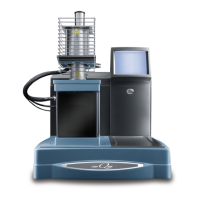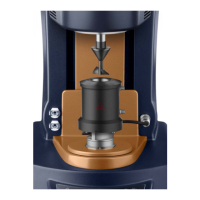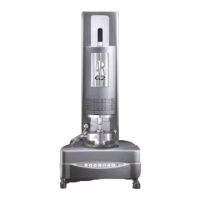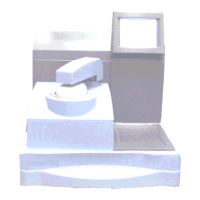Appendix B
B–34 TA I
NSTRUMENTS
TGA 2950
In conventional constant heating rate TGA, the
plot of percent/minute and the plot of percent/
°
C
are essentially identical because there is a direct
linear relationship between time and tempera-
ture. Percent/minute is conventionally chosen
for transition peak analysis and plotting. With
Hi-Res
TM
TGA there is no linear relationship
between time and temperature because the
heating rate is constantly changing. When
plotting the derivative of weight change versus
temperature for a Hi-Res
TM
TGA scan, you
should use percent/
°
C. A plot of percent/minute
versus temperature can still be useful for locat-
ing minor transitions and determining the rate of
reactions.
Adjusting
Heating Rate
Heating rate has long been used to control
transition resolution. The typical thermal
analyst makes most runs at 20
°
C/minute and
drops down to 5 or 1
°
C/minute for hard-to-
resolve transitions, or just to see if there is
anything else interesting going on that might
have been missed in the faster scan. 1
°
C/minute
scans are generally not routine due to the
enormous amount of time required to run them.
With Hi-Res
TM
TGA the heating rate is varied
automatically to give the benefit of slow heating
rates during transitions and fast rates during
baseline. However, it is still necessary to
specify a maximum heating rate. This is be-
cause in Hi-Res
TM
TGA, just as in constant
heating rate TGA, the maximum heating rate
affects the results of the experiment and, as
such, is an important adjustment to consider.

